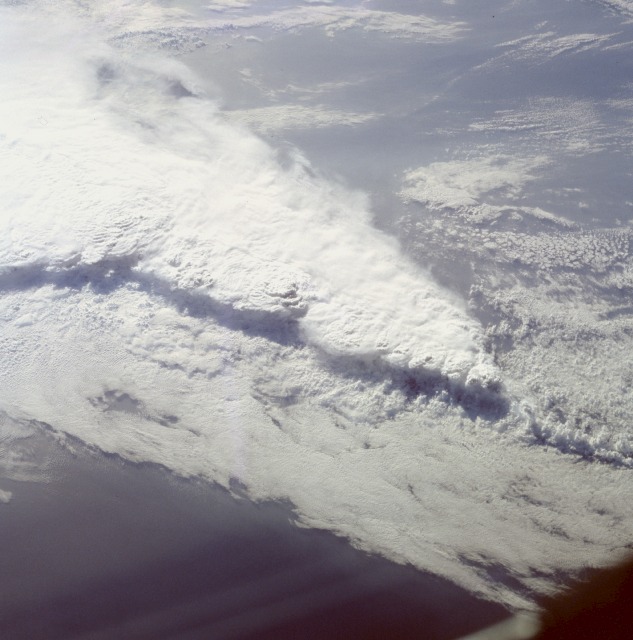|
|
 |
Lesson 10: Background
Squall Lines

A squall line is composed of individual intense thunderstorm cells arranged in a
line, or band. They occur along a boundary of unstable air, which gives them a linear appearance. Squall lines often have life spans of approximately 6 to 12 hours and extend across several states simultaneously.
Strong environmental wind shear causes the updraft to be tilted and separated
from the downdraft in squall-line thunderstorms. This prevents the precipitation from falling into the updraft and quenching it, as happens in the single-cell thunderstorm.
Return to Lesson 10
Return to Satellite Meteorology Main Page
|



